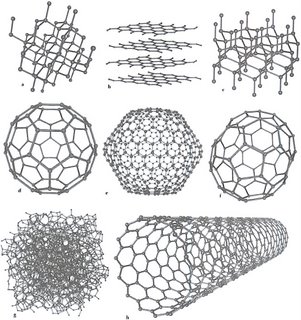The idea of a smallest length fell in line with the question of a measure as a derivative of reductionism with regard to consciousness. Going to length, the idea of a fundamental reality works its way into how a approach to consciousness is sought as some fundamental unit.
The basis of this examination is to deduce whether or not there are fundamental units with regard to consciousness. This topic as it began as a question had been begun on a different forum in order to develope insight to this very question.
As an INTJ personality I have little patience for those who might get in the way of what I am seeking to accomplish.
I sought to explain that there is a limit with which the word measure could be applied and going toward a historical explanation of this demonstrates the responsibility that was put forth in this effort.
So insightful to the progress is and was to identify a means with which consciousness "as experience" may have had some definition as to "being" the reducible element. So quickly cutting to the heart of the issue is whether measure could have been explained as a function? IN this case as said experience become that factor.
To complicate the matters then is to say that while experience is fundamental, this then refers to some fundamental unit of expression? Experience had to be made up of something much more intricate as to suggest that given the length and determination of that measure which no longer exists, with regard to that length asks that the element still seeks to be expressed as a fact of consciousness?
The science and history of the minimal length has now been covered in a recent book by Amit Hagar:
Discrete or Continuous? The Quest for Fundamental Length in Modern Physics
Amit Hagar
Cambridge University Press (2014)
Amit is a philosopher but he certainly knows his math and physics. Indeed, I suspect the book would be quite hard to understand for a reader without at least some background knowledge in math and physics. Amit has made a considerable effort to address the topic of a fundamental length from as many perspectives as possible, and he covers a lot of scientific history and philosophical considerations that I had not previously been aware of. The book is also noteworthy for including a chapter on quantum gravity phenomenology. See:Backreaction Is there a smallest length?
The basis of this examination is to deduce whether or not there are fundamental units with regard to consciousness. This topic as it began as a question had been begun on a different forum in order to develope insight to this very question.
As an INTJ personality I have little patience for those who might get in the way of what I am seeking to accomplish.
Materialism is a form of philosophical monism which holds that matter is the fundamental substance in nature, and that all phenomena, including mental phenomena and consciousness, are the result of material interactions.
Materialism is closely related to physicalism; the view that all that exists is ultimately physical. Philosophical physicalism has evolved from materialism with the discoveries of the physical sciences to incorporate far more sophisticated notions of physicality than mere ordinary matter, such as: spacetime, physical energies and forces, dark matter, and so on. Thus the term "physicalism" is preferable over "materialism", while others use the terms as if they are synonymous.
I sought to explain that there is a limit with which the word measure could be applied and going toward a historical explanation of this demonstrates the responsibility that was put forth in this effort.
"I regard consciousness as fundamental. I regard matter as a derivative of consciousness. We cannot get behind consciousness. Everything we talk about, everything that we regard as existing, postulates consciousness. Max Planck
So insightful to the progress is and was to identify a means with which consciousness "as experience" may have had some definition as to "being" the reducible element. So quickly cutting to the heart of the issue is whether measure could have been explained as a function? IN this case as said experience become that factor.
I suggest that a theory of consciousness should take experience as fundamental. We know that a theory of consciousness requires the addition of something fundamental to our ontology, as everything in physical theory is compatible with the absence of consciousness. We might add some entirely new nonphysical feature, from which experience can be derived, but it is hard to see what such a feature would be like. More likely, we will take experience itself as a fundamental feature of the world, alongside mass, charge, and space-time. If we take experience as fundamental, then we can go about the business of constructing a theory of experience.
Nonreductive explanation-Facing Up to the Problem of Consciousness
To complicate the matters then is to say that while experience is fundamental, this then refers to some fundamental unit of expression? Experience had to be made up of something much more intricate as to suggest that given the length and determination of that measure which no longer exists, with regard to that length asks that the element still seeks to be expressed as a fact of consciousness?











